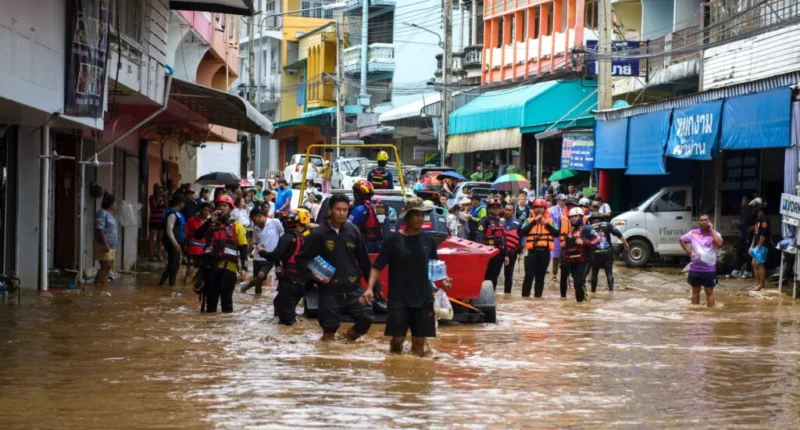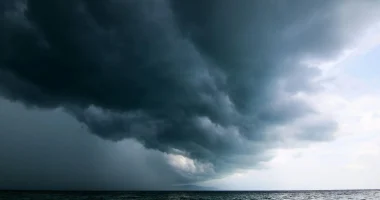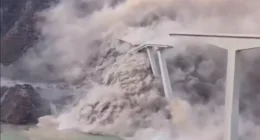Table of Contents
- Understanding the Relationship Between Climate Change and Natural Disasters
- Unraveling the Science Behind Hurricane and Typhoon Formation
- Exploring the Evolution of Aerospace Industry Partnerships
- AI Advancements: Empowering Millions in India
- Resilience Amidst Adversity: Lessons from Natural Disaster Survivors
- The Power of Disinformation: Unraveling Election Controversies
- Confronting Tragedy: Seeking Justice for Unspeakable Crimes
- Naval Modernization: China’s Strategic Moves in the Global Arena
Understanding the Relationship Between Climate Change and Natural Disasters
Southeast Asia, a region marked by its vibrant cultures and diverse ecosystems, faces significant threats from extreme weather events exacerbated by climate change. The correlation between the rising global temperatures and an increase in the frequency and intensity of natural disasters is well-documented. The Intergovernmental Panel on Climate Change (IPCC) highlights how rising sea levels, changing precipitation patterns, and more frequent storms pose considerable risks to the region.
Data indicates that since 1980, Southeast Asia has experienced a near doubling in weather-related disasters, leading to devastating impacts on communities, agriculture, and infrastructure. Events like tropical storms, flooding, and drought not only disrupt local economies but also pose long-term challenges like food security and population displacement.
Unraveling the Science Behind Hurricane and Typhoon Formation
Hurricanes and typhoons are powerful storms originating over warm ocean waters, gaining strength as they move. The mechanisms behind their formation involve several key factors:
- Warm Ocean Water: Sea surface temperatures must exceed 26°C (79°F) for storms to form.
- Atmospheric Conditions: Low wind shear allows storms to develop and intensify.
- Humidity: Sufficient moisture in the atmosphere fuels storm growth.
| Factor | Description |
|---|---|
| Warm Ocean Water | Supports storm development by providing energy. |
| Low Wind Shear | Allows the storm system to grow vertically. |
| High Humidity | Contributes to storm intensity through condensation. |
As global temperatures rise, the waters of the Western Pacific—one of the most active regions for typhoon formation—are expected to become warmer, leading to more severe storms. This trend poses a critical threat to coastal communities throughout Southeast Asia, emphasizing the urgent need for effective disaster preparedness and climate resilience strategies.
Exploring the Evolution of Aerospace Industry Partnerships
In light of increasing weather events, collaboration between Southeast Asian nations and aerospace industries has become paramount. The region’s vulnerability to typhoons and flooding has spurred advances in meteorology and remote sensing technology, enhancing how governments plan and respond to disasters.
Partnerships between nations and private aerospace companies facilitate research and development focused on:
- Satellite Technology: Monitoring weather patterns and providing real-time data.
- Weather Forecasting: Utilizing AI and machine learning to improve prediction models.
- Disaster Response: Enhancing logistical responses and emergency management through aviation.
| Partnership Type | Focus Area |
|---|---|
| STEM Partnerships | Enhancing technical education and workforce development. |
| Government Collaborations | Joint funding for climate resilience technologies. |
AI Advancements: Empowering Millions in India
While Southeast Asian nations grapple with the consequences of extreme weather, neighboring India has made substantial advances in artificial intelligence (AI) to address similar challenges. AI technology is being harnessed to forecast weather patterns, optimize resource distribution during disasters, and aid recovery efforts.
Key applications of AI in disaster management include:
- Predictive Analytics: Leveraging big data to anticipate disaster occurrences and mitigate risks.
- Resource Allocation: Optimizing supplies in response to real-time conditions and needs.
- Risk Assessment: Evaluating vulnerabilities to prioritize mitigation strategies.
These advancements can serve as a model for Southeast Asian countries, potentially creating regional cooperation for knowledge and technology sharing to build resilience and quicken recovery processes following extreme weather events.
Resilience Amidst Adversity: Lessons from Natural Disaster Survivors
Stories of survival and resilience often emerge following severe weather events. Communities across Southeast Asia have faced tragedies due to typhoons, earthquakes, and flooding, cultivating a spirit of adaptation and resourcefulness. Lessons from survivors offer insights into best practices for mitigating future impacts:
- Community Engagement: Fostering a sense of collective responsibility for disaster preparedness.
- Education and Training: Implementing programs that teach residents about safety protocols and risk reduction strategies.
- Infrastructure Investment: Building disaster-resilient infrastructure to withstand extreme weather conditions.
These strategies exemplify how communities can rebound and even thrive post-disaster, promoting both resilience and sustainability in the face of growing climate threats.
The Power of Disinformation: Unraveling Election Controversies
Disinformation, particularly during significant electoral periods, can destabilize nations, diverting attention from pressing issues such as climate change and natural disaster preparedness. In Southeast Asia, the intersection of social media and political discourse often results in distorted narratives regarding disaster responses and resource allocations.
Key strategies to combat disinformation include:
- Fact-Checking Initiatives: Organizations dedicated to validating claims made in the media.
- Promoting Digital Literacy: Educating the public to discern credible sources and avoid misinformation.
- Collaboration with Tech Companies: Encouraging social media platforms to regulate harmful content.
Confronting Tragedy: Seeking Justice for Unspeakable Crimes
Natural disasters can often catalyze injustices, from corruption in disaster relief allocations to human rights violations in emergency responses. In Southeast Asia, ongoing struggles to seek accountability following such crises highlight the need for vigilant citizen advocacy and legal reform. Survivors of past disasters have mobilized to demand transparency and justice, emphasizing the importance of equitable treatment in the wake of calamity.
Actions taken include:
- Activism and Advocacy: Grassroots movements aimed at holding governments accountable.
- Legal Frameworks: Development of laws that protect victim’s rights during and post-disaster scenarios.
- International Support: Collaborating with NGOs to aid in the pursuit of justice.
Naval Modernization: China’s Strategic Moves in the Global Arena
China’s naval modernization is not just a military ambition but also reflects its strategic responses to natural disasters and regional climate challenges. As a country heavily invested in maritime routes, enhancing naval capabilities assists in disaster response and recovery efforts across Southeast Asia.
Key components of this modernization include:
- Search and Rescue Operations: Improving capabilities to assist in maritime disasters.
- Climate Research Expeditions: Using naval resources for environmental monitoring and research.
- Regional Cooperation: Promoting joint exercises with Southeast Asian nations to enhance collaborative disaster responses.
Conclusion: Surviving the Storms – Building a Resilient Southeast Asia
As extreme weather events continue to shape the future of Southeast Asia, the intersection of climate change, technological advancements, community resilience, and policy action is set to determine the region’s capacity to withstand and recover from these challenges. Collaboration among nations, industries, and communities is essential to create a sustainable future that minimizes the risks posed by natural disasters.









